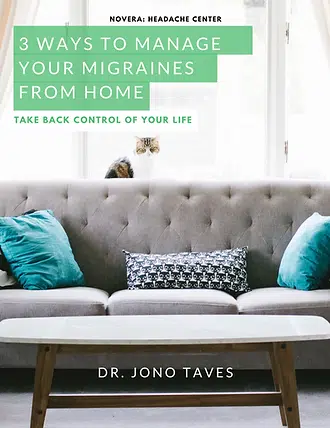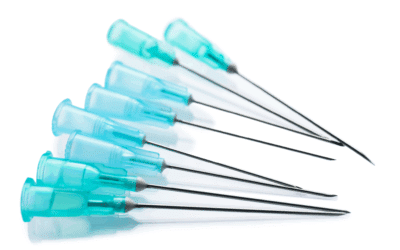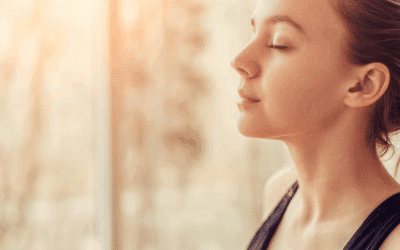
You’re standing in line for the school nurse in middle school, she puts a level on your back, you touch your toes, and she says, “You have scoliosis.” Your life continues on, there isn’t much thought about scoliosis again except for some occasional back pain. Later on you develop migraines. You get told to take a pill when you are having a migraine, and just to try to avoid triggers in your life that lead to these migraines. Traditionally, these would be looked at as two separate issues. However, the connection between spinal alignment, muscle tension, nerve health, and headaches/migraines is well documented. The connection then, between your headaches and scoliosis is not far-fetched at all; it’s a logical connection that provides hope and answers to people with scoliosis and headaches.
What is scoliosis and how is it treated?
Scoliosis is a relatively common disorder with around [1] 6-9 million occurrences in the US alone. Scoliosis is known as an abnormal lateral curve in the spine. What this causes is muscles in the back that are over stretched on the long end of the curve and overly active and tight on the short end of the curve. Within scoliosis, [2] 85-99% of patients noted that there was severe back pain as well as radiculopathy. This means that there is nerve involvement as well when a diagnosis of scoliosis. Traditionally scoliosis is something that presents itself when an individual is between 10 and 16 years old. If the scoliosis is minor [2](<20d of curvature) than it is either treated conservatively with physical therapy or monitored to see if it starts impacting anything later on. If the scoliosis is moderate [2](25-40d of curvature) than bracing, more aggressive therapy, and regular monitoring is completed. In the case of severe scoliosis [2](>45d of curvature) then aggressive treatment requires spinal surgery, intensive therapy, and heavy monitoring of the patient’s presentation to prevent further curvature.
What is the connection of scoliosis and migraines?
Scoliosis is known for the abnormal curvature of the spine[3]. However, it is not just the bones that are affected, the muscles and nerves are impacted as well. Nerves are inflamed and the muscles have a mix of tight portions and over-stretched portions. What we know of headaches, is that they are impacted by the spine (primarily the neck), muscles, and nerves. The connection then writes itself, if you have scoliosis which impacts your spine, muscles, and nerves than you are going to have a high likelihood of headaches and migraines.
What can be done about this connection?
If you are reading this, and you have been diagnosed with scoliosis and have also suffered from headaches or migraines then realize there are options for you besides grinning and bearing it. Here are 4 easy options to manage your scoliosis and treat your migraines all in one step.
- Exercise regularly: “Motion is lotion” is a common phrase utilized in the exercise world when looking at improving joint pain and stiffness. When we are moving our bodies in the form of exercise, we are improving our blood flow, lymphatic drainage, as well as our muscle and bone strength. So whether it’s going on a walk, jog, elliptical, or a circuit type exercise, get your joints moving and your heart pumping.
- Incorporate stretches into your life: Whether it’s yoga, a stretching class, or just stretching throughout your day, find stretches that improve the motion in your back, hips, neck, and shoulders. It’s best to meet with a physical therapist, exercise specialist, or strength coach to get a more personalized stretching routine.
- Check your posture: Because scoliosis is primarily affecting the joints of the spine, it is crucial to ensure that your posture is putting as little stress on your back as possible. While there is no “best” posture, we often say that the best posture is the next posture. There are however some helpful guidelines you want to follow 1. Make sure your feet are evenly on the ground 2. Ensure you have adequate lumbar support when sitting. 3. Check to see if your shoulders are pulled back. 4. Assess your head posture and check to make sure that when looking forward you are not jutting your chin forward. These tips are helpful starting point to put your spine in an optimal position to avoid triggering a headache.
- Schedule a visit in person or virtually at Novera Headache Center: At Novera we specialize in giving migraine and headache sufferers answers when the answer they’ve routinely gotten is “I dont know” or “take these medications”. We take a comprehensive approach to migraines and headaches to get to the root cause whether it be the joints of the neck, the muscles, or the nervous system and be able to reverse the symptoms people feel. Book a free discovery visit with us and start your journey towards a headache free life.
- Neurologic Surgeons, A. A. (n.d.). Scoliosis. AANS. https://www.aans.org/Patients/Neurosurgical-Conditions-and-Treatments/Scoliosis#:~:text=Scoliosis%20affects%202%2D3%20percent,occurring%20equally%20among%20both%20genders.
- Nalda, Dr. T. (2022, August 25). Scoliosis degrees of curvature chart. Scoliosis Reduction Center. https://www.scoliosisreductioncenter.com/blog/scoliosis-degrees-of-curvature-chart
- Dean, Dr. K. (2023, July 4). 10 signs you may have undiagnosed scoliosis. Chiropractor In Midvale – Scoliosis Center of Utah. https://scoliosiscenterofutah.com/10-signs-you-may-have-undiagnosed-scoliosis/#:~:text=Scoliosis%20often%20causes%20something%20called,deprived%20of%20optimal%20energy%20flow.




